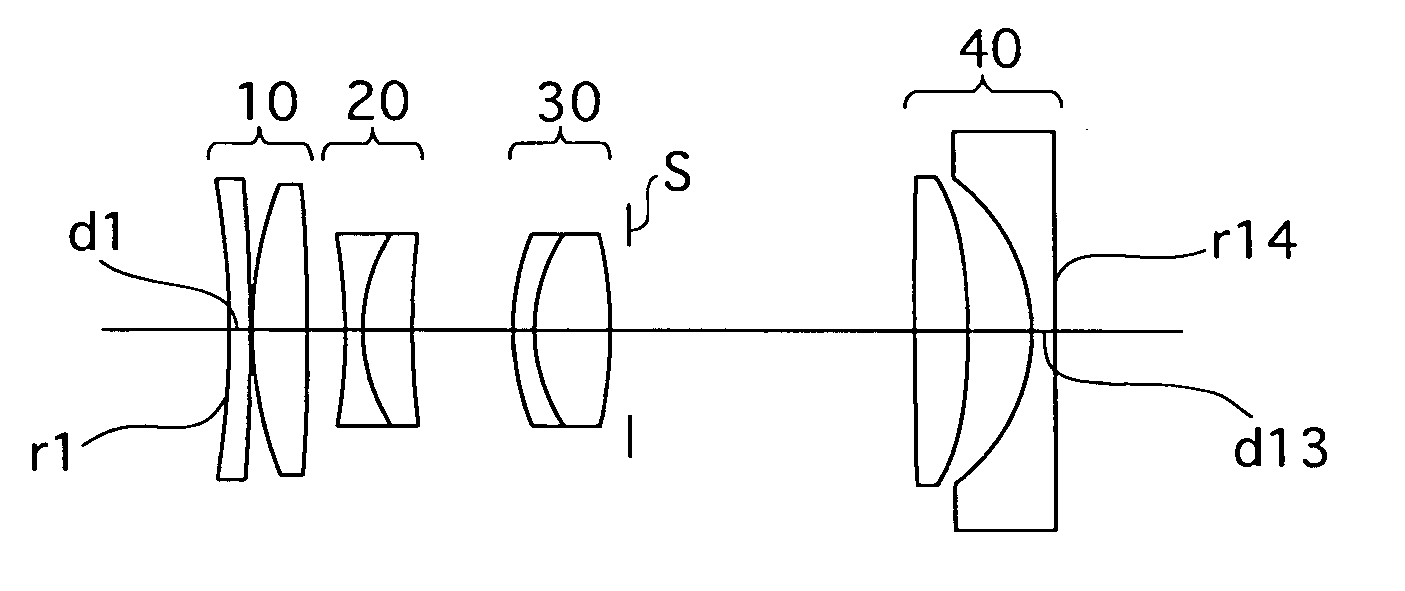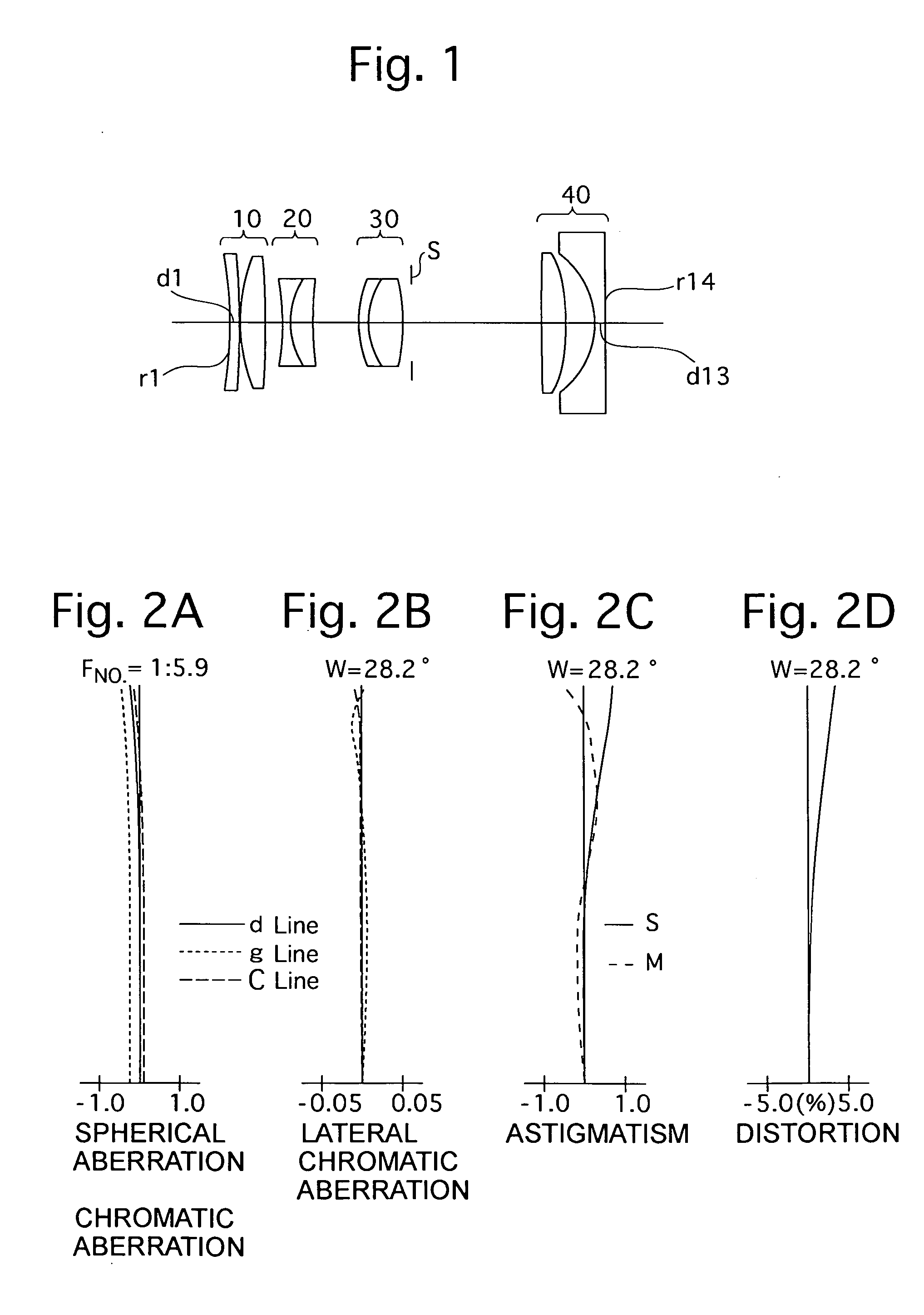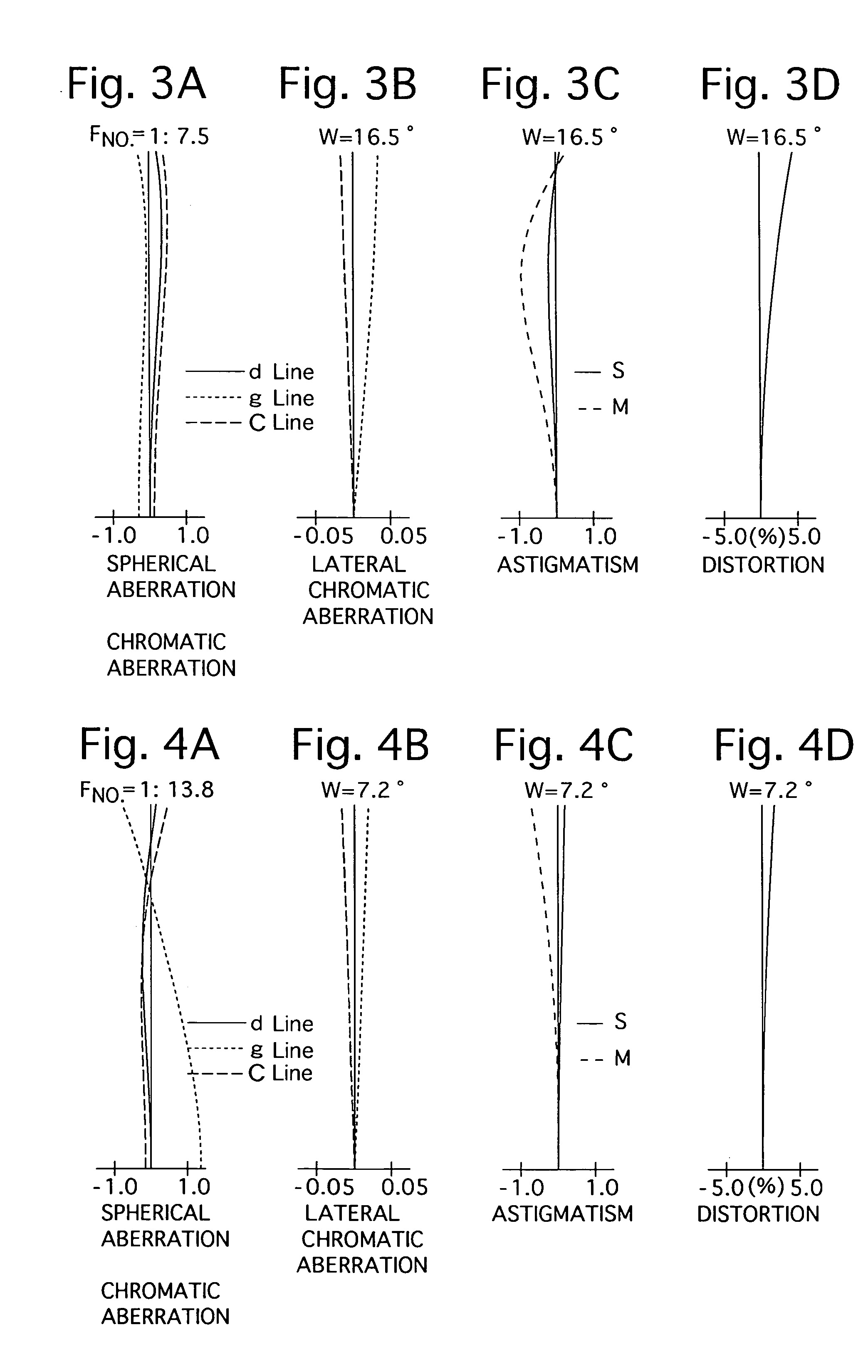Zoom lens system
a zoom lens and zoom lens technology, applied in the field of zoom lens system, can solve the problems of inability to achieve further miniaturization of the camera body, i.e., obtaining a thin camera body, and increasing the thickness of the camera when the zoom lens barrel (zoom lens system) is fully retracted, etc., and achieves the effect of higher zoom ratio
- Summary
- Abstract
- Description
- Claims
- Application Information
AI Technical Summary
Benefits of technology
Problems solved by technology
Method used
Image
Examples
embodiment 1
[0118]FIG. 1 is the lens arrangement of the zoom lens system according to the first embodiment of the present invention. The first embodiment corresponds to the lens-group moving paths shown in FIG. 16. FIGS. 2A through 2D show aberrations occurred, at the short focal length extremity (fw), in the lens arrangement shown in FIG. 1. FIG. 3A through 3D show aberrations occurred, at an intermediate focal length (fm), in the lens arrangement shown in FIG. 1. FIGS. 4A through 4D show aberrations occurred, at the long focal length extremity (ft), in the lens arrangement shown in FIG. 1. Table 1 shows the numerical data of the first embodiment.
[0119] Surface Nos. 1 through 4 constitute the positive first lens group 10, surface Nos. 5 through 7 constitute the negative second lens group 20, surface Nos. 8 through 10 constitute the positive third lens group 30, and surface Nos. 11 through 14 constitute the negative fourth lens group 40.
[0120] The diaphragm S is provided 1.0 mm behind (on the...
embodiment 2
[0125]FIG. 5 is the lens arrangement of the zoom lens system according to the second embodiment of the present invention. The second embodiment corresponds to the lens-group moving paths shown in FIG. 16. FIGS. 6A through 6D show aberrations occurred, at the short focal length extremity (fw), in the lens arrangement shown in FIG. 5. FIG. 7A through 7D show aberrations occurred, at an intermediate focal length (fm), in the lens arrangement shown in FIG. 5. FIGS. 8A through 8D show aberrations occurred, at the long focal length extremity (ft), in the lens arrangement shown in FIG. 5. Table 2 shows the numerical data of the second embodiment. The basic lens arrangement of the second embodiment is the same as that of the first embodiment. The diaphragm S is provided 1.16 mm behind (on the image plane side) the third lens group 30 (surface No. 10).
TABLE 2FNO = 1:5.9-7.6-13.8f = 39.00-70.00-168.00W = 28.2-16.6-7.2fB = 9.42-23.37-63.72Surface No.rdNdν 1*−35.6931.101.8466623.8 2−76.1430.1...
embodiment 3
[0126]FIG. 9 is the lens arrangement, at the short focal length extremity (fw), of the zoom lens system according to the third embodiment of the present invention. The third embodiment corresponds to the lens-group moving paths shown in FIG. 15. FIGS. 10A through 10D show aberrations occurred in the lens arrangement shown in FIG. 9. FIG. 11A through 11D show aberrations occurred in the lens arrangement shown in FIG. 9 at the first intermediate focal length (fm) (before switching). FIGS. 12A through 12D show aberrations occurred in the lens arrangement shown in FIG. 9 at the second intermediate focal length (fm′) (after switching). FIG. 13 is the lens arrangement, at the long focal length extremity (ft), of the zoom lens system according to the third embodiment of the present invention. FIGS. 14A through 14D show aberrations occurred in the lens arrangement shown in FIG. 13. Table 3 shows the numerical data of the third embodiment.
[0127] The values of f, W and fB are each shown in t...
PUM
 Login to View More
Login to View More Abstract
Description
Claims
Application Information
 Login to View More
Login to View More - R&D
- Intellectual Property
- Life Sciences
- Materials
- Tech Scout
- Unparalleled Data Quality
- Higher Quality Content
- 60% Fewer Hallucinations
Browse by: Latest US Patents, China's latest patents, Technical Efficacy Thesaurus, Application Domain, Technology Topic, Popular Technical Reports.
© 2025 PatSnap. All rights reserved.Legal|Privacy policy|Modern Slavery Act Transparency Statement|Sitemap|About US| Contact US: help@patsnap.com



